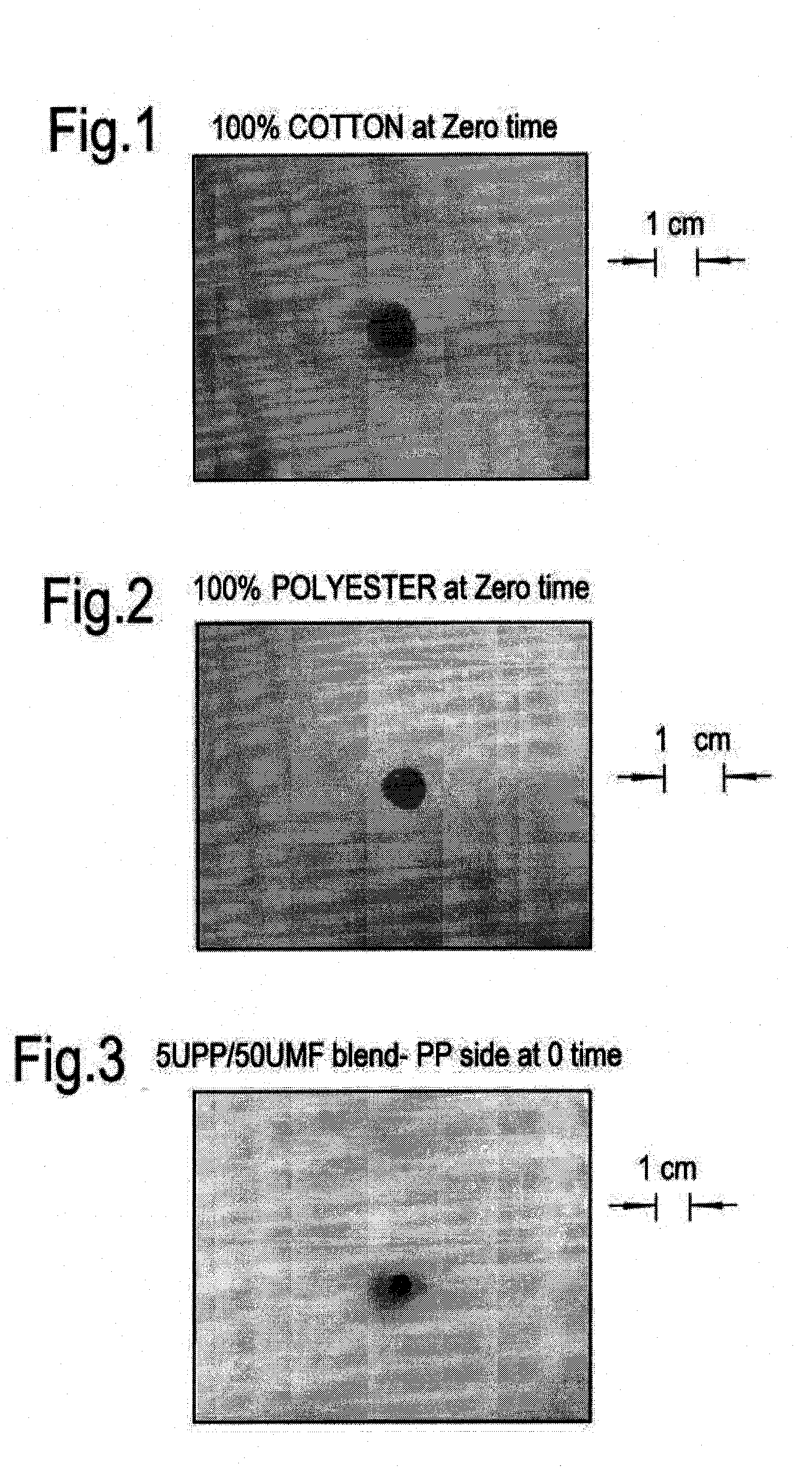A multi-component combination yarn system for moisture management in textiles and system for producing same
a multi-component combination and textile technology, applied in the direction of weaving, protective garments, garments, etc., can solve the problems of difficult integration of phase change materials, and difficulty in achieving moisture management. , to achieve the effect of enhancing water wicking and improving moisture movement qualities
- Summary
- Abstract
- Description
- Claims
- Application Information
AI Technical Summary
Benefits of technology
Problems solved by technology
Method used
Image
Examples
example 1
UMF Example 1
Application in Knit Fabrics
[0185]Knit fabrics are “composed of intermeshing loops of yarn.” (Textile Science, K. L. Hatch, U. of Arizona, July 2006). There are two types of knits: weft knits and warp knits. While the technology described can be adapted to either type of knit, the garment used in the experiment described below was made as a weft knit.
[0186]Weft knits are characterized by the fact that each weft yarn lies more or less at right angles to the direction in which the fabric is produced. The intermeshing yarn traverses the fabric cross-wise yarns.
[0187]While the manufacturing processes are clear to those familiar with the art, the following is a brief description describing the structure and technology of knit fabrics in general.
[0188]Textiles Science, K. L. Hatch, U. of Arizona, July 2006:
[0189]The width and length of knit fabrics are referred to as crosswise and lengthwise, respectively. A course is a “row of loops across the width of a fabric.” A wale is a ...
example 2
Application in Woven Fabrics
[0209]While many configurations of fabrics with moisture movement can be formulated in a preferred embodiment woven twill fabrics are most appropriate. Woven fabrics, unlike knit fabrics, are basically comprised of yarns running the length of the fabric (warp yarns) and the width of the fabric (weft yarns). Changes in the weave configuration can change the appearance and physical qualities of the fabric. In the case of moisture movement the twill weave is chosen because it allows for a mass producible configuration that allows each yarn to perform its specified task. A twill fabric is one in which the weave repeats on a three or more warp and filling yarns and diagonal lines are produced on the face of the fabric. Therefore, the interlacing pattern is over more than one yarn and under one or more yarns. The progression of interlacing is by one, thereby producing the diagonal line (FIG. 26.4).
[0210]All twill fabrics have a series of diagonal lines, or twil...
PUM
| Property | Measurement | Unit |
|---|---|---|
| size | aaaaa | aaaaa |
| size | aaaaa | aaaaa |
| size | aaaaa | aaaaa |
Abstract
Description
Claims
Application Information
 Login to View More
Login to View More - R&D
- Intellectual Property
- Life Sciences
- Materials
- Tech Scout
- Unparalleled Data Quality
- Higher Quality Content
- 60% Fewer Hallucinations
Browse by: Latest US Patents, China's latest patents, Technical Efficacy Thesaurus, Application Domain, Technology Topic, Popular Technical Reports.
© 2025 PatSnap. All rights reserved.Legal|Privacy policy|Modern Slavery Act Transparency Statement|Sitemap|About US| Contact US: help@patsnap.com



